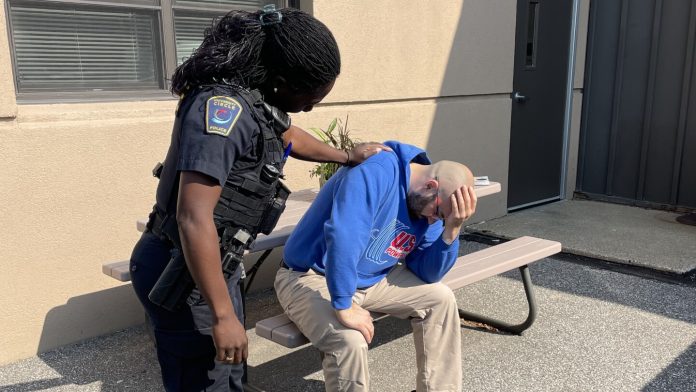The terms “professional bearing” and “command presence” are pretty well understood in our industry and they are easily recognizable to those we serve. When we think of these terms, a few things will come to mind. The officer demonstrates good posture and the officer’s uniform is sharp and crisp. It won’t be wrinkled and/or ill fitted to the officer’s physique, and it wouldn’t have a barbeque sauce stain on a sleeve. The officers will have a serious business-like look on their faces upon approach and may be in possession of a notebook or clipboard in their non-dominant hand.
Thank you for reading this post, don't forget to follow and signup for notifications!
Confidence through appearance and tone
It doesn’t stop there. The way they speak will be part of that command presence. It will be done in a calm tone and the delivery of their words will be steady and generally direct depending on the situation. Collectively, their posture, uniform, facial expression and voices will exhibit a clear confidence that they are the right people for this situation. For older seasoned officers, a command presence can also present an added look of “been there, done that,” which highlights their experience and wisdom.
The initial approach by an officer and the manner he or she presents can help establish mutual respect between the officer and the people he is engaged with. And the right approach can be the difference between a matter going extremely well or one that is an unmitigated disaster and results in injury or loss of life. And those bad results can also result in loss of police careers, protracted litigation, serious damage to an agency’s reputation, and a significant loss of trust between the server and the served.
Shifting from authority to empathy
Another manner of presenting that can seamlessly flow from an initial professional bearing and command presence is an empathetic posture. This manner of presenting delivers compassion and concern to our customers particularly those who are victims of crime, are unsheltered, or suffering from a mental health crisis. It can also be shown to those who commit crimes.
A person will be able to recognize an empathetic posture of an officer by the look in his or her eyes and the officer’s body language. It will be obvious by the words being spoken to include a tone of voice and cadence that demonstrate that they truly care about the person’s situation. The officer’s entire presentation will have a gentler more approachable appearance that will invite the person to not only trust the officer but feel like their issue is of utmost importance to the officer and the agency he represents.
The power of an empathetic posture
The beauty of an empathetic posture is how smoothly it can flow from a command presence and if need be, it can quickly transition back to a command presence or a strong tactic position depending on the situation. Officers skilled in communications and de-escalation tactics can make these transitions look effortless. And it is important to note that when an officer engages in an empathetic posture, he or she is not compromising their safety. They can still maintain safe positioning and keep a keen eye out on behavioral changes of people as well as their physical environment and any risks it contains.
A real-life example of empathy in action
I recently watched a bodycam of one of our University Circle Police Officers demonstrate an empathetic posture with a knife-wielding man in a wheelchair who was in a severe mental health crisis. It clearly looked like he was trying a suicide by cop attempt but our officer who had back-up officers with him and was maintaining a safe distance, continually encouraged him to drop the knife. His voice and behavior demonstrated his command of the situation but the tone and words spoken by him showed his genuine concern for the man’s life.
He eventually tossed the knife and the officer then immediately engaged the man by lowering himself to his level in the wheelchair while expressing a heartful desire to help him now that he was safe to approach. The officer’s mannerisms demonstrated a gentle and supportive approach that likely helped the man in crisis to decide to go no further with the knife.
The message behind every posture
The way officers carry themselves can really play a major role in their delivery of service and the success of their mission. Like so many things in life, we must adapt to situations and understand that how we project ourselves will help determine the outcomes of our engagements with those we serve. By exhibiting an empathetic posture, we are sending a very direct and clear message which is that the officer cares about the person and the situation. By carrying themselves in this manner, officers and their agencies can strengthen their customers’ confidence in them and help build trust. Many have heard the old adage that “we are what we eat” but for cops, it may be “we are what we present.”



